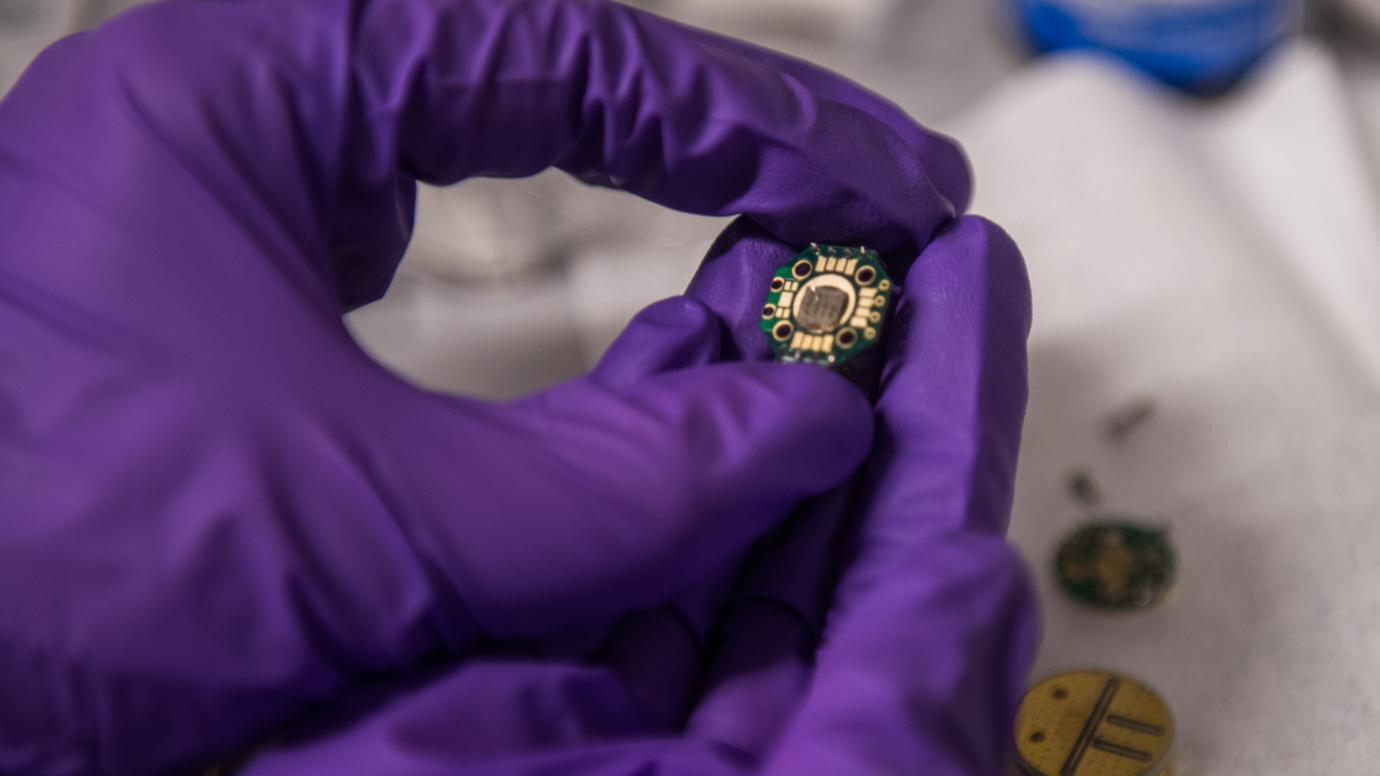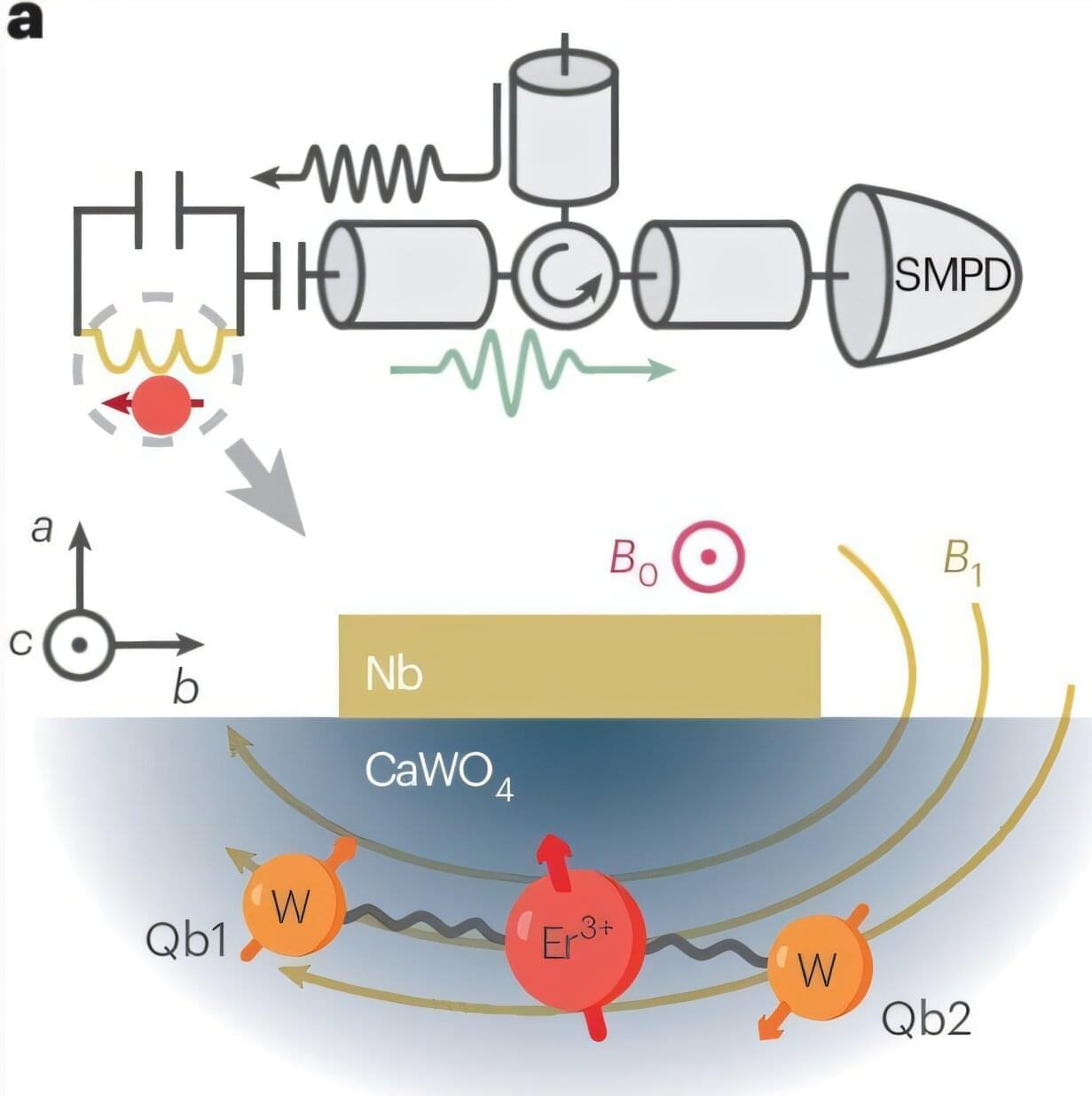Quantum mechanics has gone from a theory in test to becoming the foundation of new technologies



A team from the Faculty of Physics and the Center for Quantum Optica l Technologies at the Center of New Technologies, University of Warsaw has developed a new method for measuring elusive terahertz signals using a “quantum antenna.”
The authors of the work utilized a novel setup for radio wave detection with Rydberg atoms to not only detect but also precisely calibrate a so-called frequency comb in the terahertz band. This band was until recently a white spot in the electromagnetic spectrum, and the solution described in the journal Optica paves the way for ultrasensitive spectroscopy and a new generation of quantum sensors operating at room temperature.
Terahertz (THz) radiation, being part of the electromagnetic spectrum, lies at the boundary of electronics and optics, positioned between microwaves (used, for example, in Wi-Fi) and infrared.

Trapped neutral atoms are an attractive platform for quantum computing, as large arrays of atomic qubits can be arranged and manipulated to perform gate operations. However, the loss of useable atoms—either from escape or from disturbance—can be a limitation for long computations with repeated measurements. Researchers at Atom Computing, a company in California, have devised a “reset or reload” protocol that mitigates atom losses [1]. The method was successfully employed during a computation consisting of 41 cycles of qubit measurements.
All current quantum computers require error correction, which involves measuring certain qubits at intermediate steps of a computation. Reusing these qubits would avoid needing a prohibitively high overhead in qubit numbers, says team member Matthew Norcia. But in the case of atoms, the process of resetting measured qubits risks disturbing unmeasured ones.
To overcome this challenge, the researchers have developed a way to shield unmeasured atoms from the resetting process. They use targeted laser beams to immunize the unmeasured atoms against excitation by shifting their resonances. They then turn on a second set of lasers that cool the measured atoms and reinitialize them, enabling them to join the unmeasured atoms in the next computational step.

Researchers from the School of Physics at Wits University, working with collaborators from the Universitat Autònoma de Barcelona, have demonstrated how quantum light can be engineered in space and time to create high-dimensional and multidimensional quantum states. Their work highlights how structured photons—light whose spatial, temporal or spectral properties are deliberately shaped—offer new pathways for high-capacity quantum communication and advanced quantum technologies.
Published as a review article in Nature Photonics, the study surveys rapid progress in techniques capable of creating, manipulating and detecting quantum structured light. These include on-chip integrated photonics, nonlinear optics, and multiplane light conversion, which now form a modern and increasingly powerful toolkit. Together, these advances are bringing structured quantum states closer to real-world applications in imaging, sensing, and quantum networks.


A UC Irvine team uncovered a never-before-seen quantum phase formed when electrons and holes pair up and spin in unison, creating a glowing, liquid-like state of matter. By blasting a custom-made material with enormous magnetic fields, the researchers triggered this exotic transformation—one that could enable radiation-proof, self-charging computers ideal for deep-space travel.

Quantum computing devices of increasing complexity are becoming more and more reliant on automatised tools for design, optimization and operation. In this Review, the authors discuss recent developments in AI for quantum”, from hardware design and control, to circuit compiling, quantum error correction and postprocessing, and discuss future potential of quantum accelerated supercomputing, where AI, HPC, and quantum technologies converge.

Quantum technology is accelerating out of the lab and into the real world, and a new article argues that the field now stands at a turning point—one that is similar to the early computing age that preceded the rise of the transistor and modern computing.
The article, authored by scientists from University of Chicago, Stanford University, the Massachusetts Institute of Technology, the University of Innsbruck in Austria, and the Delft University of Technology in the Netherlands, offers an assessment of the rapidly advancing field of quantum information hardware, outlining the major challenges and opportunities shaping scalable quantum computers, networks, and sensors. The paper appears in Science.
“This transformative moment in quantum technology is reminiscent of the transistor’s earliest days,” said lead author David Awschalom, the Liew Family Professor of molecular engineering and physics at the University of Chicago, and director of the Chicago Quantum Exchange and the Chicago Quantum Institute.

Quantum computers, systems that process information leveraging quantum mechanical effects, have the potential of outperforming classical systems on some tasks. Instead of storing information as bits, like classical computers, they rely on so-called qubits, units of information that can simultaneously exist in superpositions of 0 and 1.
Researchers at University Paris-Saclay, the Chinese University of Hong Kong and other institutes have developed a new quantum computing platform that utilizes the intrinsic angular momentum (i.e., spin) of nuclei in tungsten-183 (183 W) atoms as qubits.
Their proposed system, introduced in a paper published in Nature Physics, was found to achieve long coherence times and is compatible with existing superconductor-based quantum information processing platforms.

A boiling sea of quarks and gluons, including virtual ones—this is how we can imagine the main phase of high-energy proton collisions. It would seem that particles here have significantly more opportunities to evolve than when less numerous and much “better-behaved” secondary particles spread out from the collision point. However, data from the LHC accelerator prove that reality works differently, in a manner that is better described by an improved model of proton collisions.
A lot happens during high-energy proton-proton collisions. Protons are hadrons, i.e. clusters of partons—quarks and the gluons that bind them together. When protons collide with each other at sufficiently high energies, their quarks and gluons (including the virtual ones, which appear momentarily during interactions) enter into various complex interactions.
Only when they “cool down” do the quarks stick together to form new hadrons, which scatter from the collision area and are recorded in detectors. Intuition therefore suggests that the entropy of the produced hadrons—a quantity describing the number of states in which the particle system can find itself—should be different from that in the parton phase of the collision, when there are many interacting quarks and gluons, and the interactions appear at first glance to be as chaotic as they are dynamic.